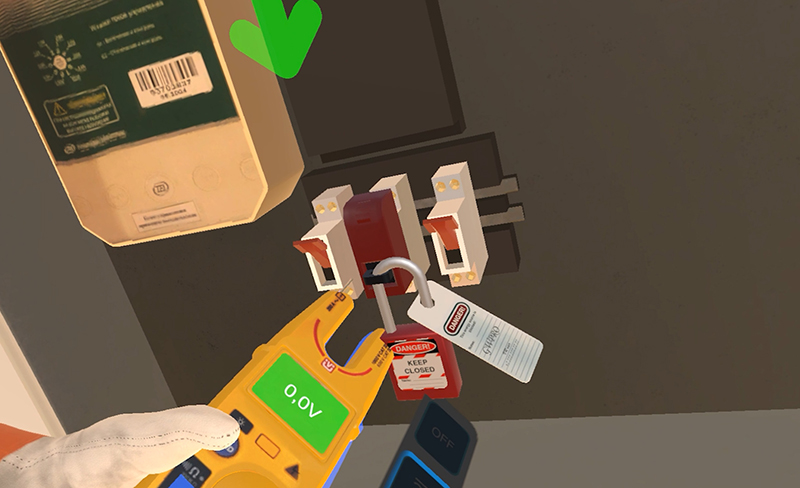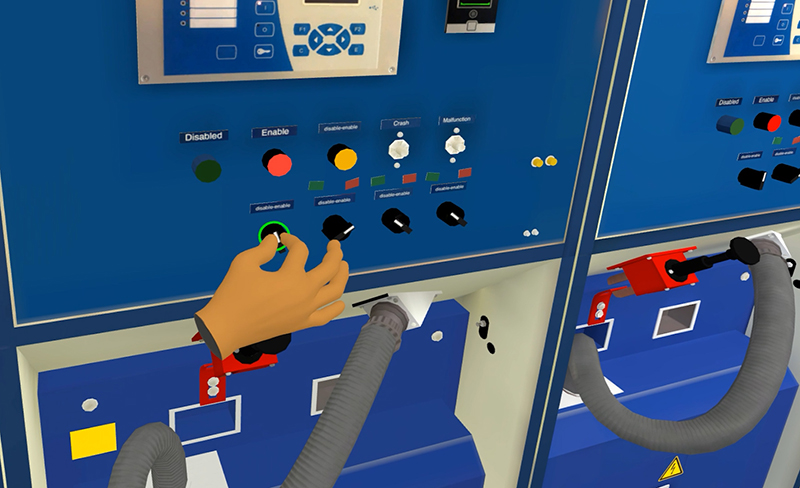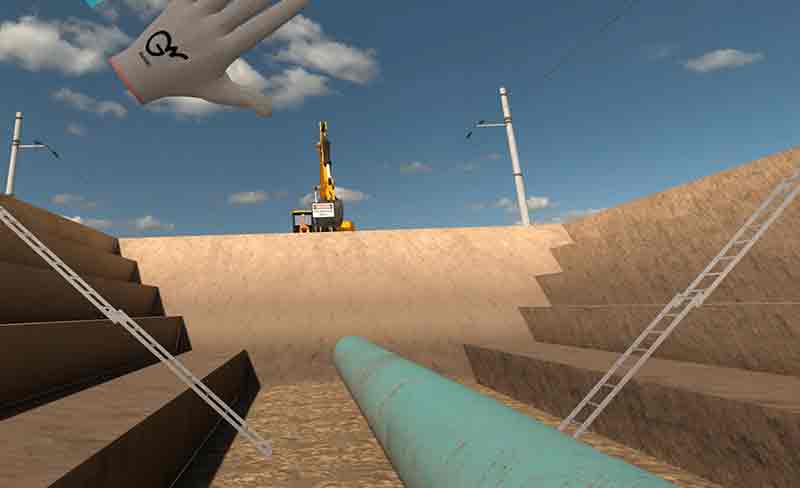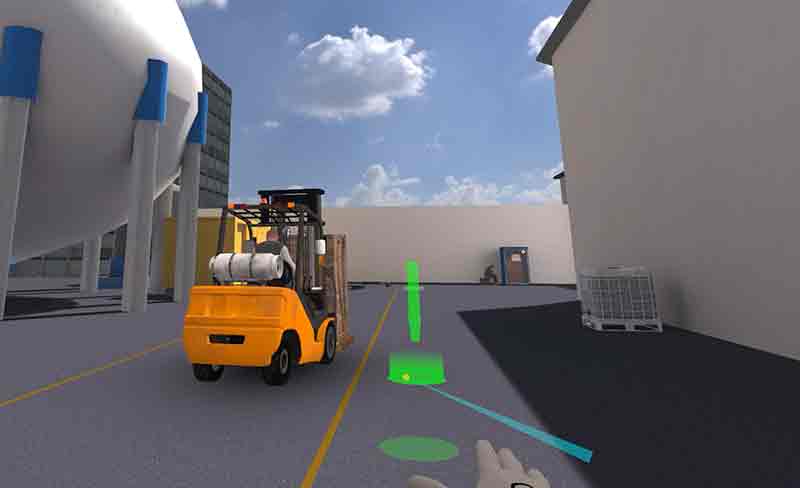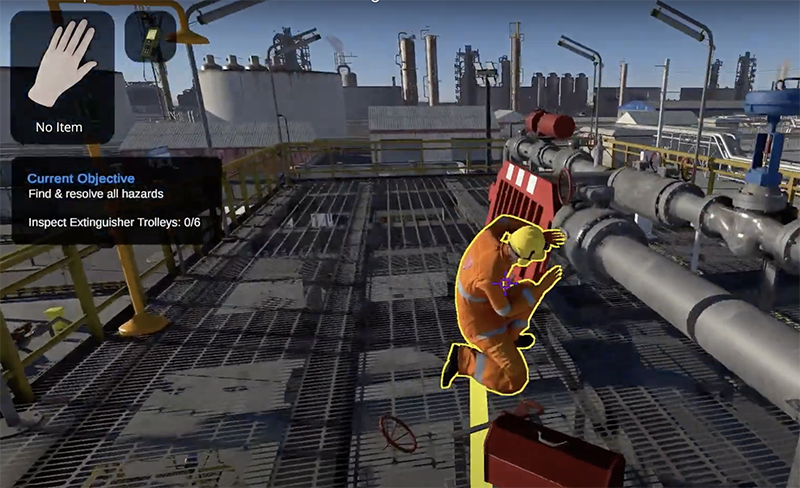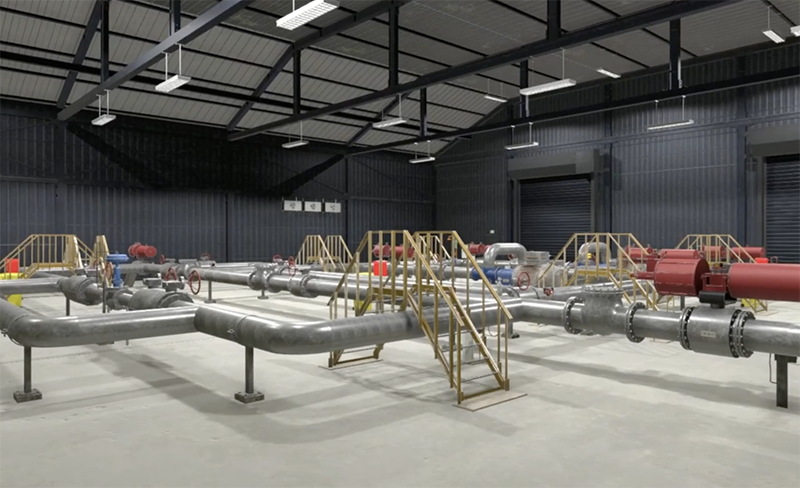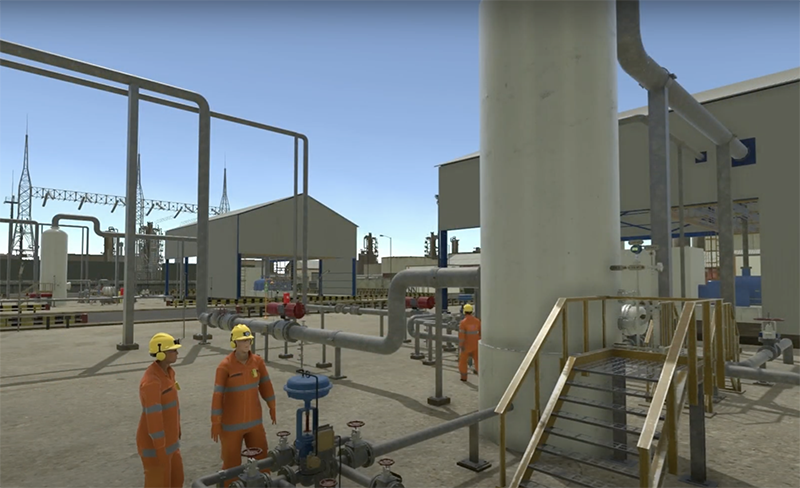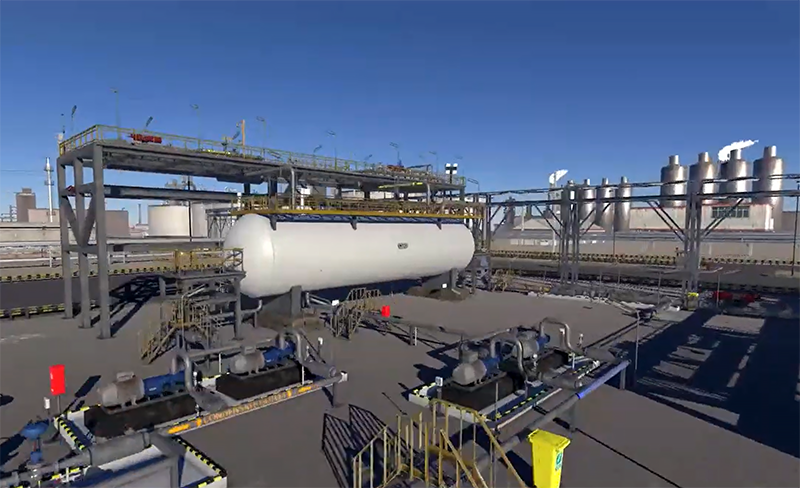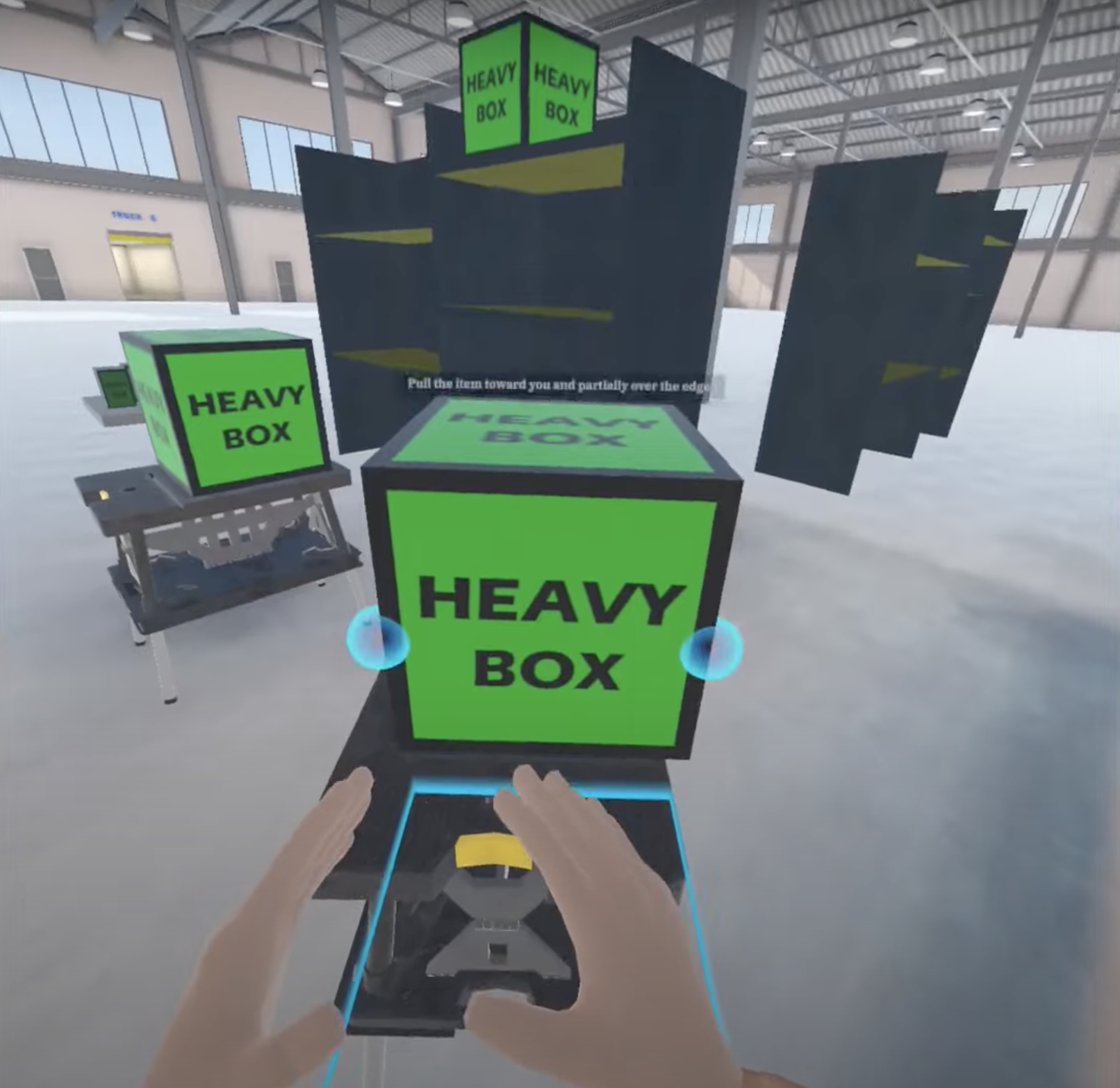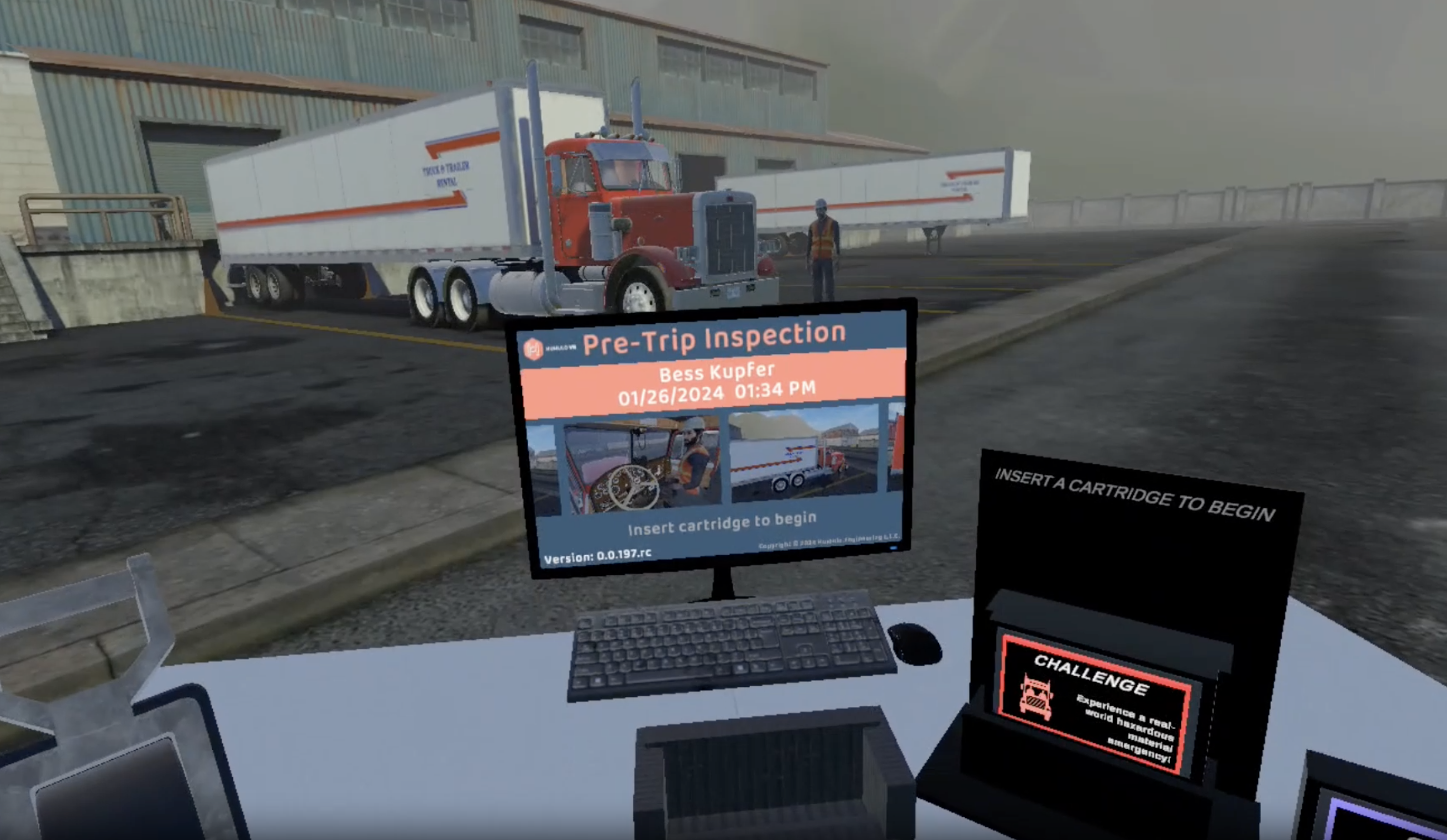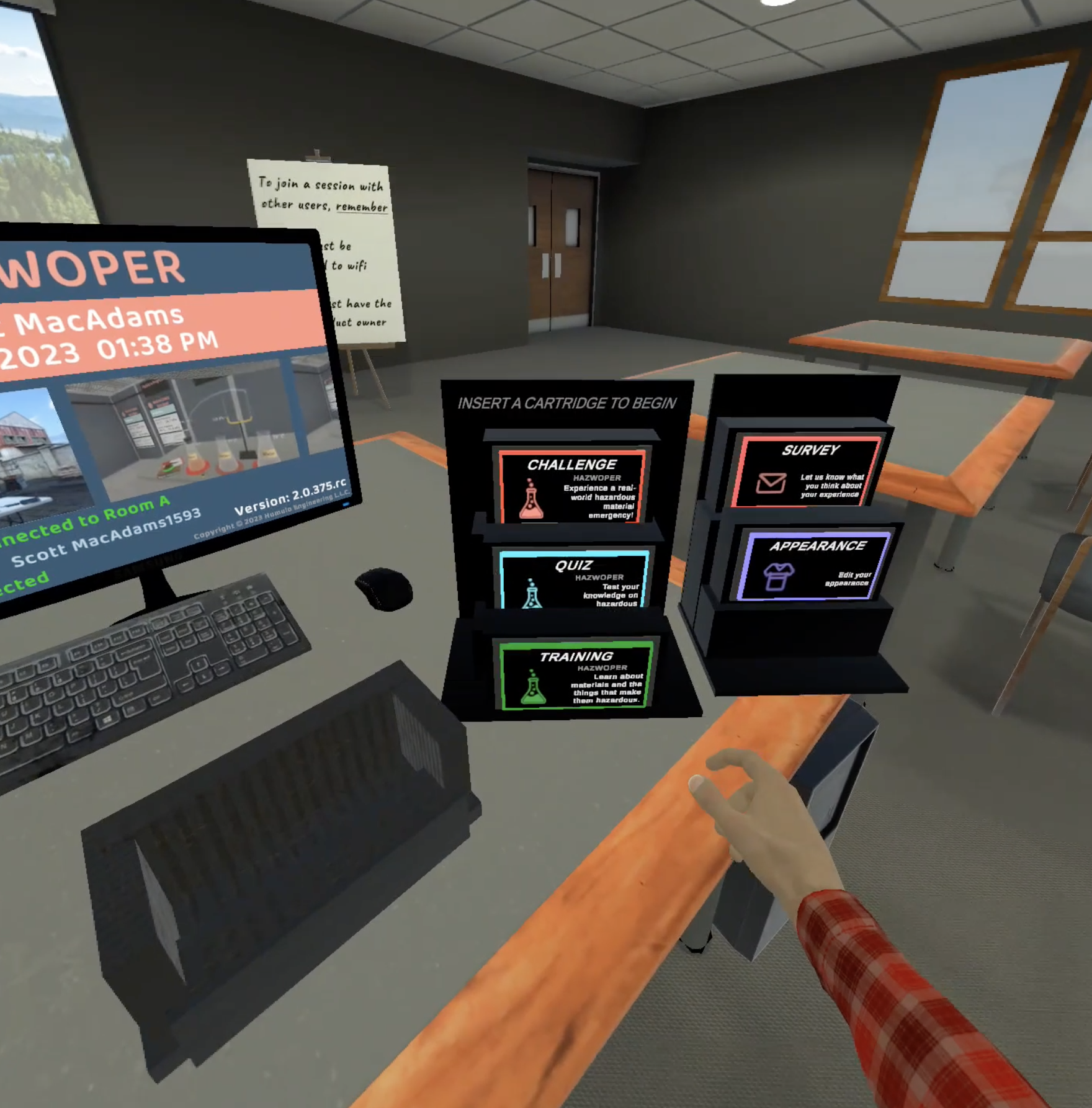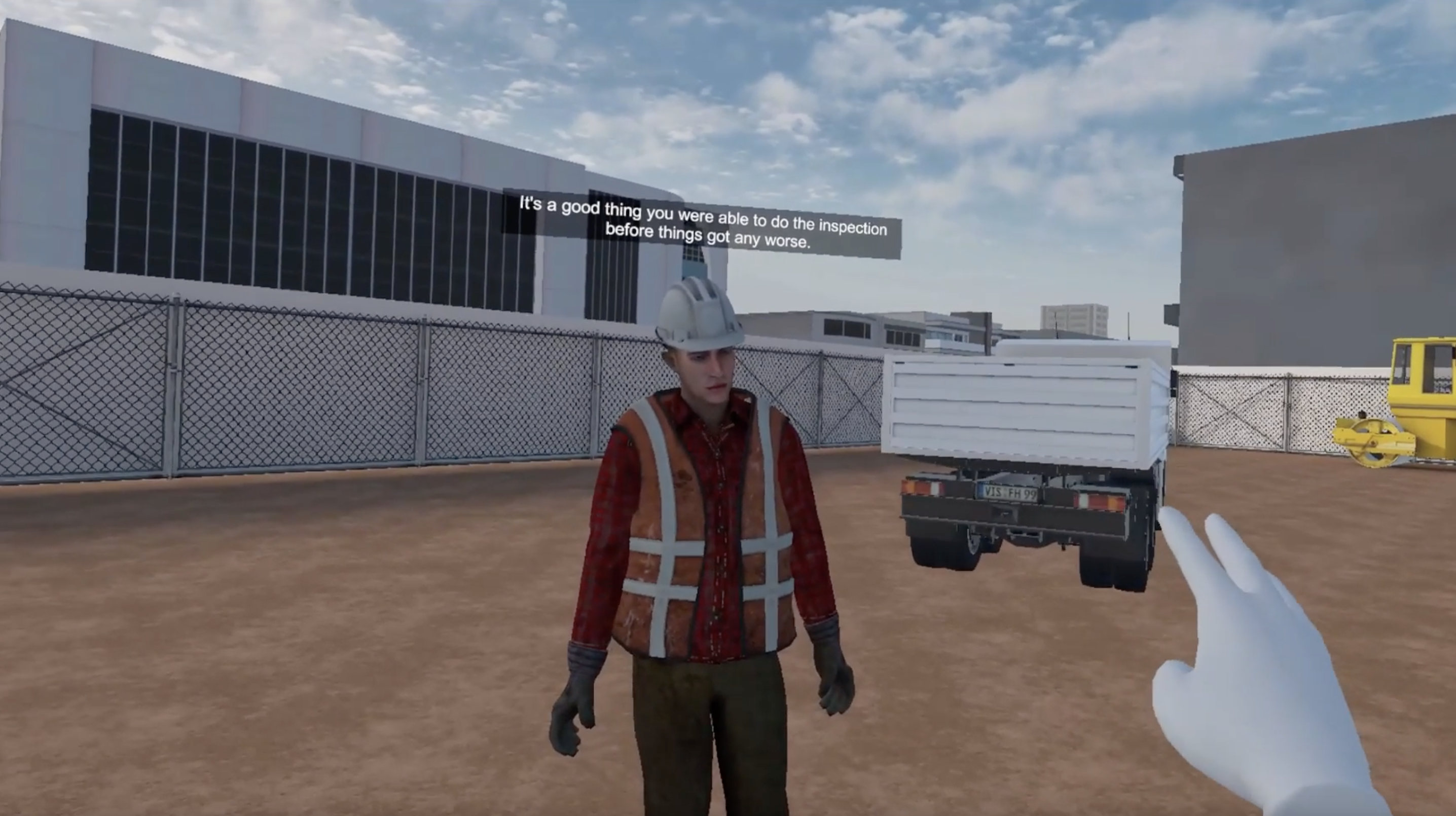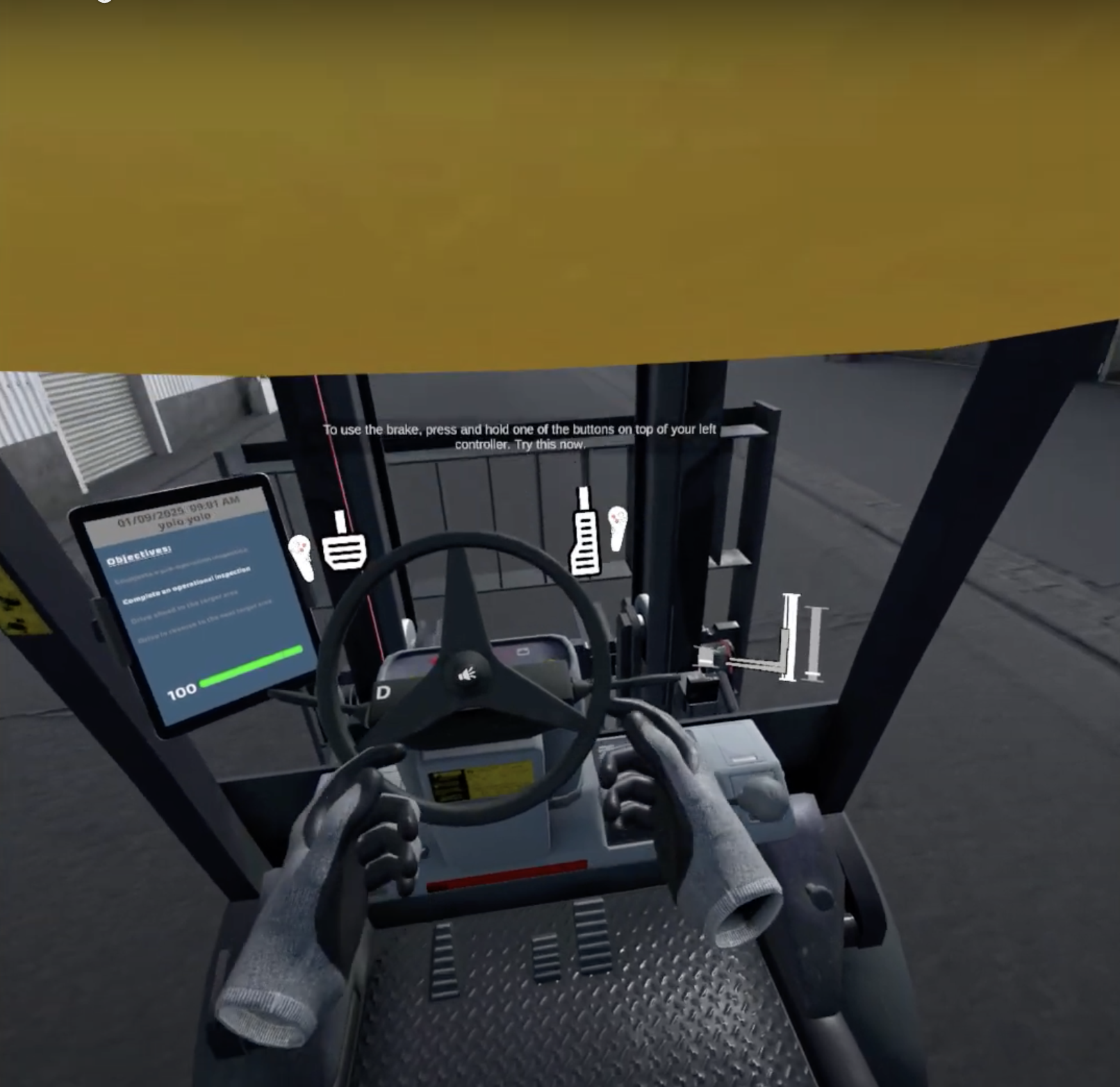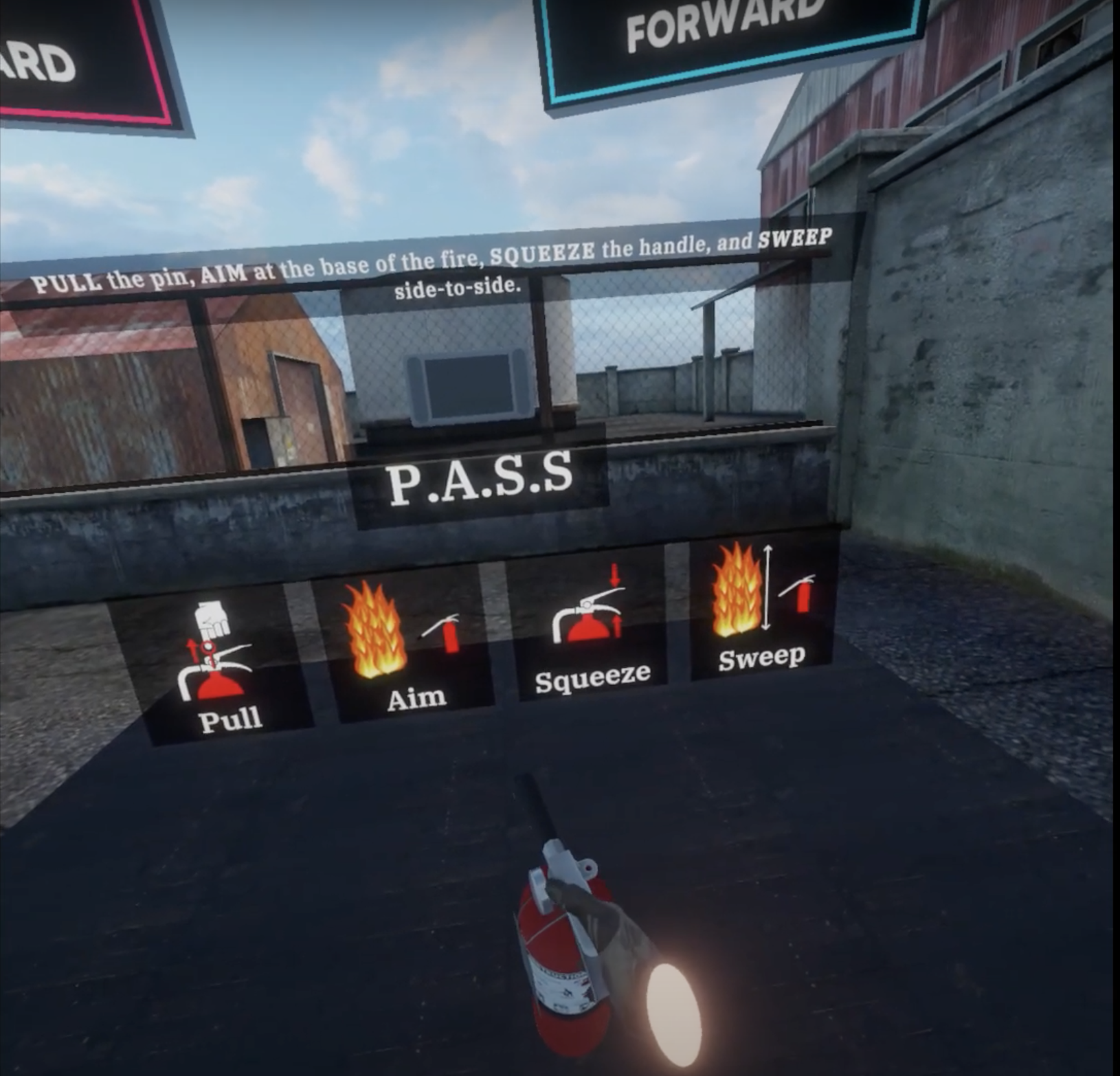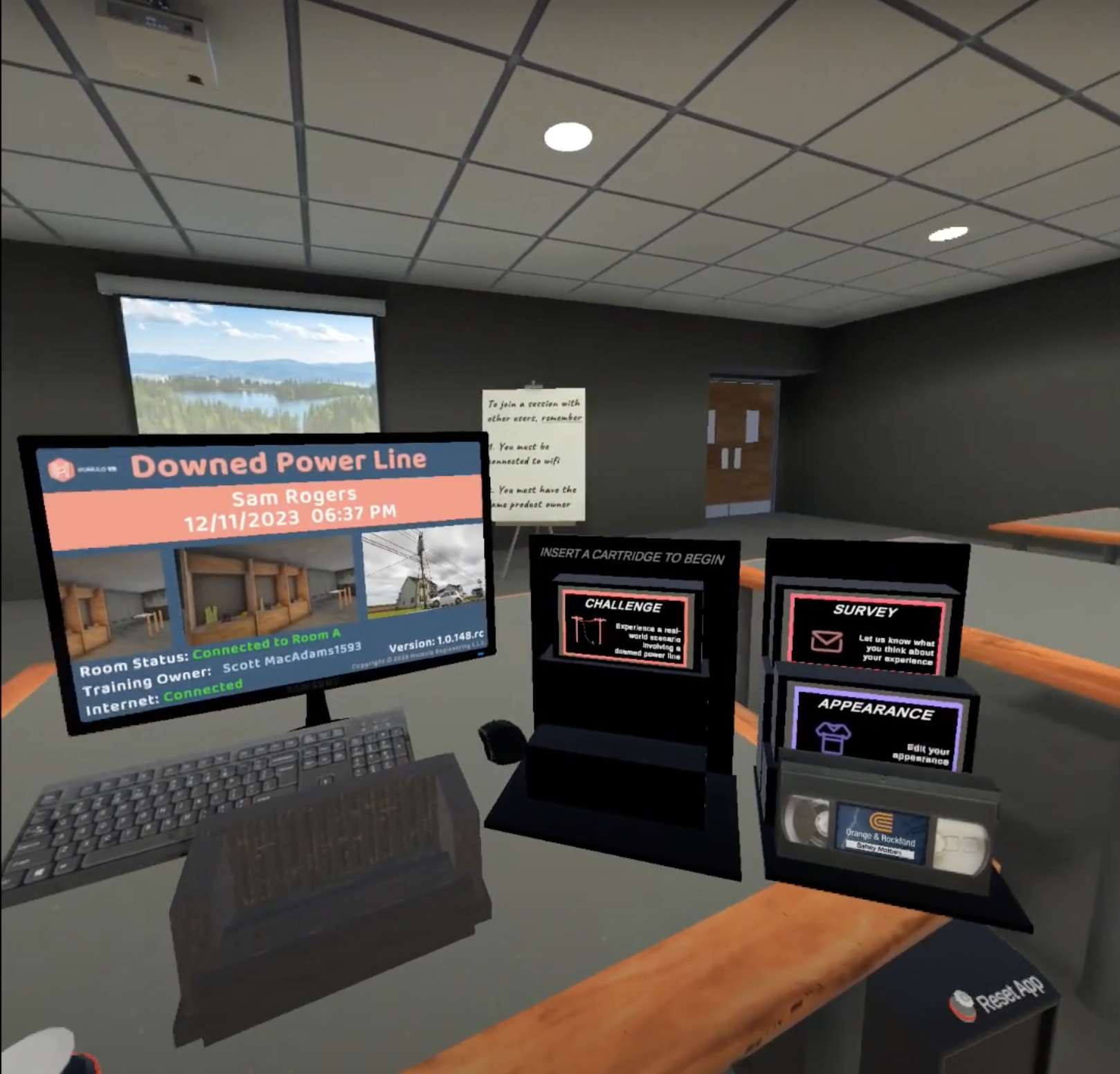Emergency & Safety Virtual Training
Emergency preparedness requires more than information. Employees must know how to act quickly, accurately, and without hesitation. Standard training sessions often fail to replicate the stress and complexity of real situations, which limits their effectiveness. Virtual training changes that by giving people a safe space to practice difficult decisions under realistic conditions.
Using simulated environments, you can train your team to follow evacuation procedures, respond to equipment failures, handle chemical spills, or identify workplace hazards. The focus is always on learning through interaction, not passive observation. Whether your staff works in manufacturing, logistics, construction, or administration, each training experience reflects their actual work setting.
Participants access training content on desktop computers, laptops, or VR headsets. This flexibility removes location-based restrictions and supports consistent delivery across distributed teams. Each training environment is designed around the safety risks employees are likely to encounter daily.
Benefits of Virtual Emergency Training
Coordinating in-person safety exercises involves logistical challenges, disrupts operations, and often fails to provide reliable data on performance. Virtual training eliminates these issues by offering structured learning that can be repeated, tracked, and updated as safety protocols evolve.
You no longer need to sacrifice productivity for compliance. Learners engage with realistic emergency scenarios, receive immediate corrections, and build decision-making skills over time. The ability to repeat training with consistent quality significantly improves outcomes, especially for rare but critical emergencies such as fires, chemical leaks, or confined space incidents.
Some of the most significant benefits include:
- Scalable training delivery. You can train hundreds of employees without organizing physical sessions or coordinating external facilitators.
- Standardized content. Everyone receives the same level of instruction regardless of location or schedule.
- Improved knowledge retention. Hands-on scenarios increase memory recall and build lasting familiarity with procedures.
- Actionable feedback. Performance data helps identify common mistakes and target areas for follow-up.
- Reduced training costs. Eliminating travel, printed guides, and third-party trainers leads to measurable savings.
How to Evaluate Training Impact
Tracking results is essential for understanding whether your safety training efforts are having the intended effect. A strong virtual training platform gives you access to performance data that can inform broader safety strategies and operational improvements.
Start by identifying whether learners complete the scenarios without needing repeated guidance. Monitor the types and frequency of errors, then compare those insights with on-the-job behaviors. If incidents are decreasing and safety reports improve, the training will likely meet its objectives.
Pre- and post-training assessments also provide clear indicators of progress. By measuring retention and application of safety protocols over time, you can adjust the training based on real performance outcomes.
Important metrics to monitor:
- Incident frequency. Compare safety performance before and after training implementation.
- Regulatory compliance. Verify that learners consistently meet standards outlined in safety audits or industry-specific regulations.
- User engagement. Assess motivation and consistency using usage rates, training completion, and voluntary participation.
- Assessment scores. Analyze test results and response times to pinpoint topics that require reinforcement.
- Assessment scores. Analyze test results and response times to pinpoint topics that require reinforcement.
- Managerial observations. Supervisor input can reveal whether trained individuals perform tasks more safely or report issues more proactively.
The insights above support continuous improvement and allow you to adjust training to meet both operational and compliance-related goals.
How to Roll Out Virtual Emergency Training
Introducing a new training format requires careful planning. The process should begin by identifying the highest-risk situations in your workplace. Review safety records, incident reports, and equipment usage data to determine where intervention is most needed.
After defining your goals, select training content that addresses actual safety concerns rather than generic principles. For example, a team working with heavy machinery should focus on lockout-tagout procedures, while laboratory staff may need to practice emergency response for chemical exposure.
An effective rollout includes the following steps:
- Establish clear safety objectives. Align your training strategy with measurable goals such as reducing injury rates or improving hazard reporting.
- Select an accessible training format. Ensure compatibility with a variety of devices to make training available to all personnel, regardless of location or equipment.
- Develop scenario-based experiences. Design content that allows learners to apply safety principles in real-time, simulated environments.
- Test before full deployment. Start with a smaller group to identify any usability issues, gaps in understanding, or areas needing adjustment.
- Monitor adoption and outcomes. Track performance, gather feedback, and continue improving based on what the data shows.
Building a sustainable emergency training system takes time, but the results in terms of preparedness and reduced risk are well worth the effort.
Common Pitfalls and How to Avoid Them
Several avoidable mistakes can reduce the effectiveness of your virtual safety training. One of the most common issues is overwhelming learners with too much information at once. Long sessions covering numerous procedures lead to reduced attention and lower retention.
Another problem occurs when training content is too generic. Employees quickly disengage when scenarios do not reflect the challenges they face on the job. To maintain relevance, create content based on real work conditions and safety concerns specific to each department.
Limited access to training tools also slows adoption. If only one VR device is available per site, participation becomes inconsistent. Choose flexible platforms that support both immersive and non-immersive access options.
Lastly, engagement suffers when managers do not actively support the training. Employees are more likely to complete and apply what they learn when supervisors reference it during daily operations or performance reviews.
To improve adoption and results:
- Focus each training session on one or two clear objectives.
- Adapt content to match each department's safety profile.
- Make training available on multiple platforms and devices.
- Management should be included in the rollout, review, and follow-up processes.
Use data insights to update content regularly and ensure continued alignment with real safety needs.
Practicing High-Stakes Scenarios Safely
The advantage of virtual training lies in its ability to simulate high-pressure environments without exposing employees to actual danger. Emergency situations such as fires, explosions, or structural collapses can be experienced in full detail, allowing users to react and make decisions under stress.
Each training scenario introduces realistic variables such as poor visibility, time pressure, and unfamiliar layouts. For instance, a logistics employee might practice handling an unexpected fire during a blackout, including locating extinguishers, assisting others, and reaching an exit. A construction worker might need to identify unstable scaffolding and communicate effectively to prevent a fall.
To strengthen emergency response performance:
- Randomize some training elements so that users can stay alert and cannot predict outcomes.
- Introduce time-based challenges that require fast decision-making within safety constraints.
- Include cause-and-effect sequences where user decisions lead to different outcomes, allowing them to learn from mistakes without real-world consequences.
- Provide a review session after each exercise to reinforce lessons and clarify correct procedures.
Virtual safety training does not replace physical drills entirely, but it prepares individuals to respond faster, act more confidently, and reduce panic in real emergencies.
Build Readiness Through Realistic Practice
Emergency situations are unpredictable. Proper preparation helps prevent injury, equipment damage, and business interruption. Virtual safety training gives you a practical, measurable, and flexible method to build that preparation into your workforce.
Instead of relying on occasional lectures or inconsistent physical drills, you can now deliver high-quality safety instruction anytime, anywhere. Start with the most critical risks in your operations. Build clear, focused content around them. Track how people perform, then use that data to improve both the training and on-the-ground safety practices.
With the right tools and commitment, your teams will not only learn the right actions, but they will also remember them, apply them, and confidently carry them into every shift.
Found 42 results
